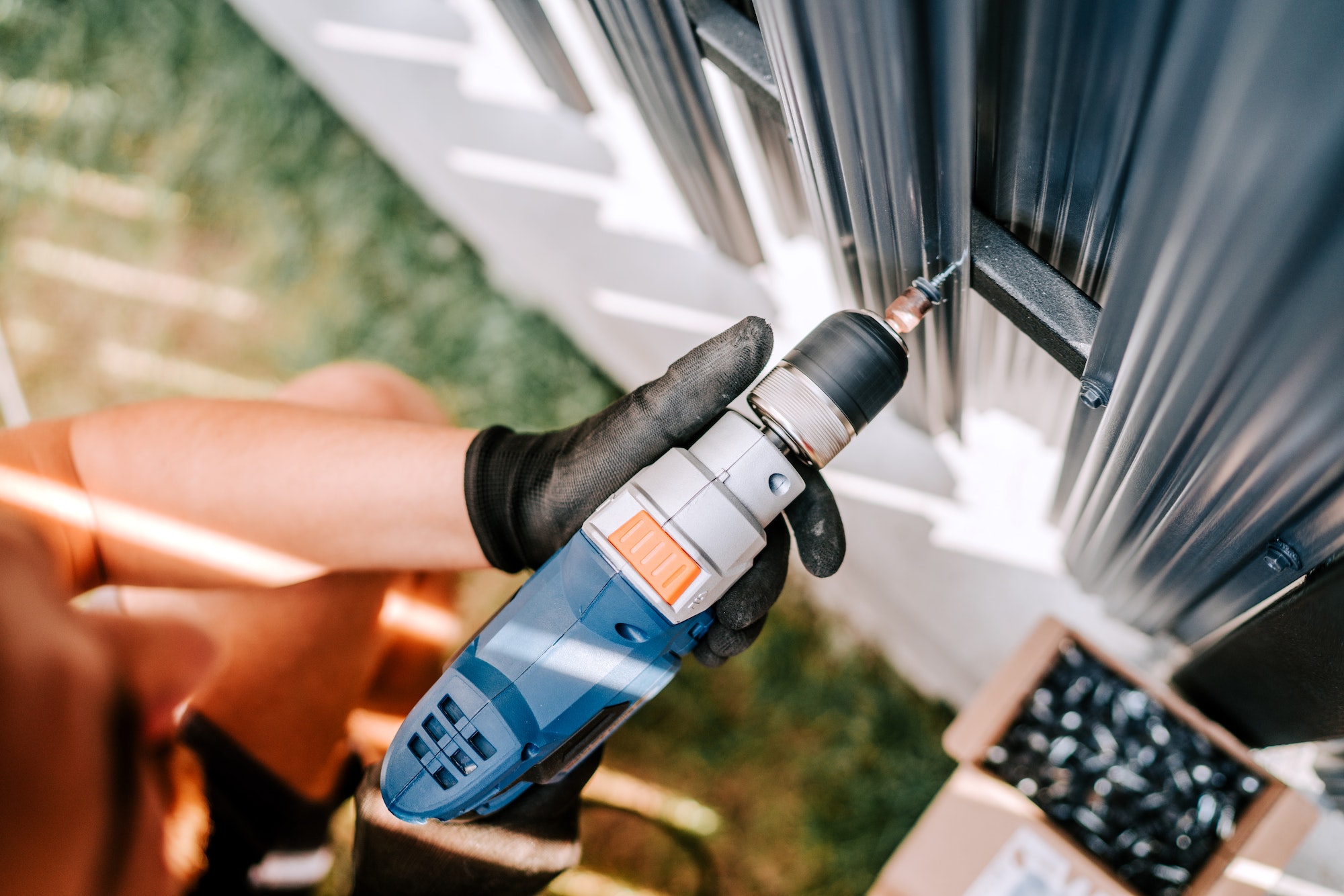In the realm of modern construction, the electric screwdriver has emerged as a game-changer. Gone are the days of manual labor and tedious screwing tasks. Today, we delve into the world of electric screwdrivers, exploring their evolution and the expert insights that vouch for their prowess.
The Journey from Manual to Electric
The evolution of tools is a testament to humanity’s relentless pursuit of efficiency and innovation. Among the pantheon of tools, the journey of the screwdriver from its manual origins to its electric evolution is particularly fascinating.
In ancient times, screws and their corresponding tools were rudimentary, primarily serving as adornments or for specific applications like wine presses. The manual screwdriver, as we recognize it today, began its journey in the 15th century, becoming an indispensable tool for craftsmen and builders. Its simple design—a handle and a shaft ending in a tip that fits into the head of a screw—remained largely unchanged for centuries.
However, as the industrial revolution took hold and construction projects grew in scale and complexity, the limitations of manual screwdrivers became evident. Workers sought a tool that could deliver more power, speed, and consistency. The 20th century, with its rapid technological advancements, answered this call. The birth of the electric screwdriver was a watershed moment in the world of tools. Initially adopted in assembly lines to increase productivity, its benefits soon became apparent to a broader audience.
The transition wasn’t just about speed; it was about transforming the very nature of construction and assembly work. Tasks that once took hours were reduced to minutes. The electric screwdriver, with its ability to harness electrical energy to turn screws with precision and power, symbolized the dawn of a new era in the world of tools—an era where manual effort was augmented by the might of electricity.
How Electric Screwdrivers Work
The electric screwdriver, a staple in modern toolkits, is a marvel of engineering that seamlessly blends mechanics with electronics. To truly appreciate its genius, it’s essential to delve into the intricacies of its operation.
At the heart of every electric screwdriver lies its motor, a compact yet powerful device that converts electrical energy into mechanical energy. When you press the trigger of the screwdriver, you initiate a flow of electricity from the battery or power source to the motor. This electric current interacts with the motor’s internal magnets, creating a magnetic field. This magnetic interaction causes the motor’s rotor to spin, which in turn rotates the screwdriver’s shaft and the attached bit.
Modern electric screwdrivers often come equipped with a variable speed feature, allowing users to adjust the rotation speed of the bit. This is achieved through a variable resistor or electronic circuitry that modulates the current flowing to the motor. By controlling the current, you effectively control the motor’s speed and, consequently, the torque or turning force exerted on the screw.
Another noteworthy feature is the torque adjustment. This allows users to set a maximum rotational force, ensuring that screws aren’t driven too deeply or too loosely. Once the set torque is reached, a clutch mechanism disengages the motor from the bit, preventing further rotation.
Additionally, advancements in battery technology have played a pivotal role in the screwdriver’s evolution. Lithium-ion batteries, with their high energy density and long lifespan, have made cordless electric screwdrivers more efficient and portable. This means that users aren’t tethered to a power source and can work with greater freedom.
In essence, the electric screwdriver is a symphony of physics, electronics, and mechanics, working in harmony to transform a simple push of a button into precise, powerful rotations that make our construction and repair tasks exponentially easier.
Advantages of Using Electric Screwdrivers
The electric screwdriver, since its inception, has revolutionized the way we approach construction, assembly, and repair tasks. Its advantages over the traditional manual screwdriver are numerous, making it a preferred choice for professionals and DIY enthusiasts alike. Let’s delve into the myriad benefits of this modern tool.
- Speed and Efficiency: Perhaps the most evident advantage is the sheer speed at which tasks can be completed. What might take several minutes with a manual screwdriver can be accomplished in mere seconds with an electric counterpart. This efficiency is especially beneficial in projects that involve repetitive screwing tasks, such as assembling furniture or installing drywall.
- Consistent Torque: Electric screwdrivers offer consistent torque, ensuring every screw is driven with the same force and depth. This uniformity is crucial in professional settings where precision is paramount. The adjustable torque settings further allow users to tailor the force to the specific material and screw type, preventing damage or stripping.
- Reduced Physical Strain: Manual screwing can be tiring, especially during prolonged tasks. Electric screwdrivers alleviate this strain, making it easier on the wrists and hands. This reduction in physical effort can also lead to more accurate work, as users are less likely to make errors due to fatigue.
- Versatility: Many electric screwdrivers come with a range of bits and attachments, making them suitable for various tasks beyond just screwing. Whether it’s drilling a small hole or working with different screw heads, the electric screwdriver can adapt with ease.
- Portability and Cordless Operation: With advancements in battery technology, cordless electric screwdrivers have become increasingly popular. These tools offer the freedom to work without being tethered to a power source, making them ideal for tasks in remote or hard-to-reach areas.
- Enhanced Features: Modern electric screwdrivers often come equipped with additional features that enhance usability. LED lights, for instance, illuminate the work area, ensuring accuracy even in low-light conditions. Magnetic bit holders, on the other hand, keep screws and bits within easy reach.
- Cost-Efficiency: While the initial investment might be higher than a manual screwdriver, the time and effort saved in the long run make electric screwdrivers a cost-effective choice, especially for professionals.
In conclusion, the electric screwdriver, with its blend of speed, precision, and convenience, offers undeniable advantages that make it an indispensable tool in the modern world. Whether you’re a seasoned professional or a home DIYer, the benefits of this tool are hard to ignore.
Expert Opinions: Top Electric Screwdriver Picks
In the vast world of electric screwdrivers, choosing the right one can be daunting. With myriad options, each boasting unique features and capabilities, making an informed decision is crucial. To help navigate this landscape, we’ve turned to industry experts for their top picks. Here’s what they had to say about some of the best electric screwdrivers available on Amazon:
1. Best Overall: DEWALT 8-Volt Gyroscopic Electric Screwdriver Kit
Expert Insight: Evgeni from RollerUp states, “When it comes to a blend of power, precision, and durability, the DEWALT 8-Volt Gyroscopic Electric Screwdriver stands out. Its gyroscopic technology is a game-changer, allowing users to control the direction and speed of rotation simply by twisting their wrist. This intuitive control, combined with its compact design, makes it perfect for both intricate tasks and heavy-duty applications. The kit, complete with multiple bits and a robust battery life, offers everything a professional could ask for.”
Features:
- Gyroscopic technology for intuitive control.
- Adjustable two-position handle for both in-line and pistol-grip operation.
- LED light to illuminate workspaces.
- Long-lasting battery with quick charging capabilities.
2. Best Budget: BLACK+DECKER Cordless Screwdriver
Expert Insight: Yan Margulis from CapableGroup remarks, “Budget doesn’t always mean compromise. The BLACK+DECKER Cordless Screwdriver is a testament to that. It offers reliable performance at a fraction of the cost of high-end models. While it may not have the bells and whistles of pricier options, it gets the job done efficiently, making it ideal for occasional users or those just starting their DIY journey.”
Features:
- Forward and reverse switch for easy screw driving and removal.
- Compact design for accessibility in tight spaces.
- Integrated battery with a wall charger.
- Simple and user-friendly operation.
3. Best Heavy-Duty: Bosch 12-Volt Pocket Driver
Expert Insight: Evgeny Goncharov from Mirakasa opines, “For tasks that demand power and resilience, the Bosch 12-Volt Pocket Driver is my go-to. Despite its compact size, it packs a punch, delivering consistent torque and speed. Its durability is commendable, withstanding the rigors of daily professional use. The battery life is impressive, ensuring minimal interruptions during work.”
Features:
- High torque output for demanding tasks.
- LED light for enhanced visibility.
- Ergonomic grip for comfortable prolonged use.
- Quick-change chuck for seamless bit transitions.
4. Best for Household Use: Skil 4-Volt Cordless Screwdriver
Expert Insight: Lenoid from Berintek shares, “Household tasks require a tool that’s versatile, user-friendly, and compact. The Skil 4-Volt Cordless Screwdriver checks all these boxes. From assembling furniture to fixing loose cabinet handles, it handles a range of tasks with ease. The integrated LED light is a thoughtful addition, especially for tasks in dimly lit corners of the house.”
Features:
- USB charging for convenience.
- Battery charge indicator to prevent unexpected downtimes.
- Magnetic bit storage for easy access.
- Ergonomic design for comfortable grip and control.
Electric Screwdrivers: Safety and Maintenance Tips
Electric screwdrivers, while designed for convenience and efficiency, also come with their set of precautions. Proper usage and maintenance not only ensure the longevity of the tool but also safeguard the user from potential hazards. Here are some essential safety and maintenance tips to keep in mind:
1. Read the Manual: Before using any electric screwdriver, always consult the user manual. It provides specific instructions tailored to your model, ensuring you understand its features and safety protocols.
2. Check for Damages: Before each use, inspect the tool for any visible damages, especially to the cord, plug, and battery. Damaged equipment can pose electrical hazards and should be repaired or replaced immediately.
3. Use the Right Bit: Ensure you’re using the correct bit for the task. Using an inappropriate bit can lead to stripped screws or damage to the tool itself.
4. Keep Away from Moisture: Electric tools and water don’t mix. Always store your screwdriver in a dry place and avoid using it in damp conditions to prevent electric shocks or short-circuiting.
5. Don’t Overcharge: If your screwdriver is battery-operated, avoid leaving it on the charger once it’s fully charged. Overcharging can reduce battery lifespan and, in some cases, pose a fire risk.
6. Store Properly: When not in use, store your electric screwdriver in a cool, dry place, preferably in its original case. This protects it from dust, moisture, and accidental drops.
7. Regular Cleaning: Dust and debris can accumulate in the screwdriver’s moving parts. Periodically clean the tool with a soft brush or cloth to ensure smooth operation.
8. Avoid Force: If a screw isn’t moving, don’t force it. Applying excessive pressure can damage both the screw and the tool. Instead, check if you’re using the right bit and technique.
9. Wear Protective Gear: While electric screwdrivers are generally safe, it’s always a good practice to wear protective eyewear to shield against any flying debris.
10. Disconnect When Not in Use: If your screwdriver is corded, always unplug it when it’s not in use. For battery-operated models, remove the battery if you plan to store it for an extended period.
The horizon of construction tools is ever-expanding. With advancements in battery technology and AI, we can expect electric screwdrivers that are smarter, more efficient, and even more user-friendly. The future promises tools that can communicate with each other, offering a seamless construction experience.
The electric screwdriver, with its myriad benefits, has truly revolutionized the world of construction. As we stand on the cusp of further technological advancements, one thing is clear: the electric screwdriver is here to stay. For those looking to upgrade their toolkit, the choice is evident. Embrace the power in your palm!
Discover more from Futurist Architecture
Subscribe to get the latest posts sent to your email.


![modern apartment [article_title]](https://www.futuristarchitecture.com/wp-content/uploads/2025/03/Hidden-Storage-Furniture-Is-the-Small-Space-Hack-Youve-Been-900x600.jpg)
